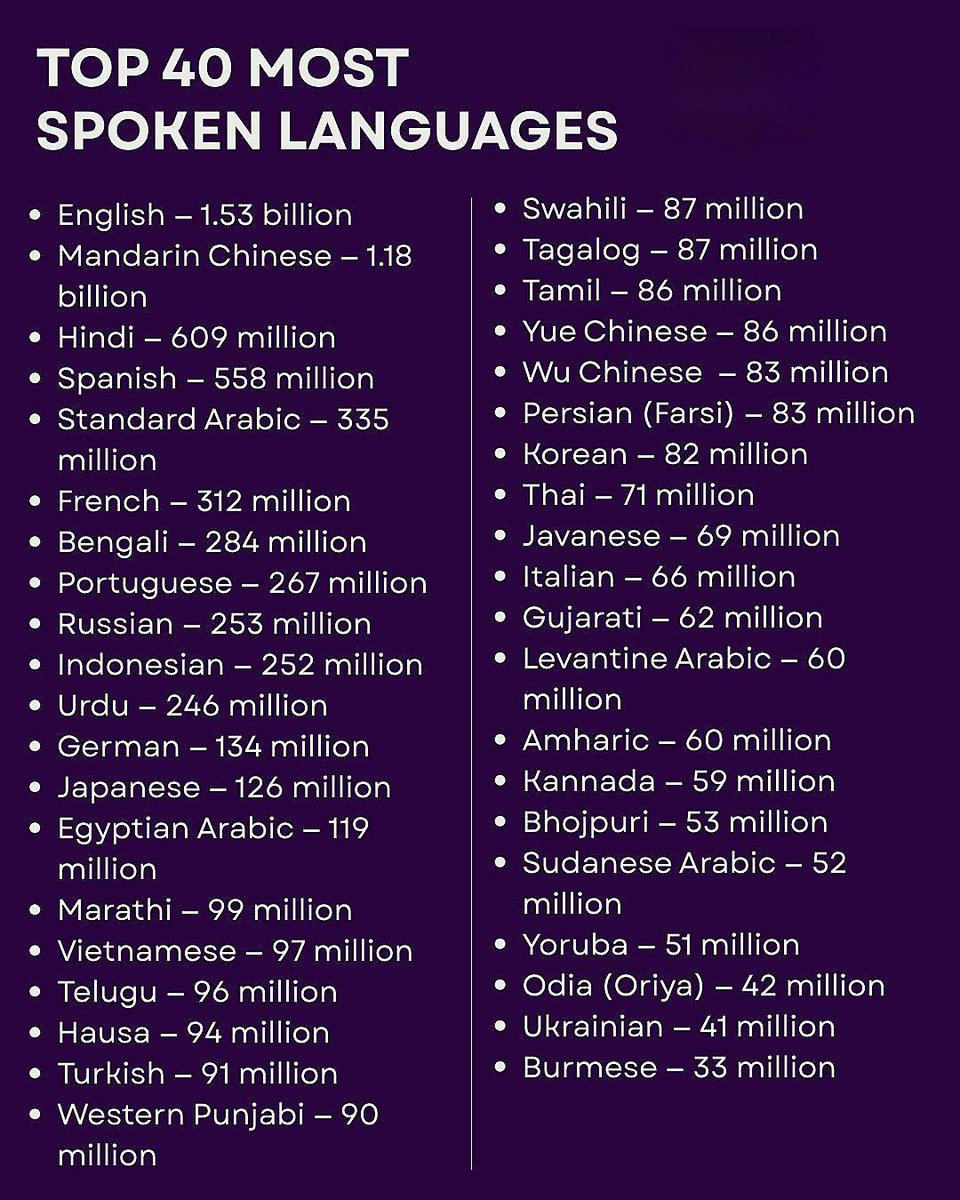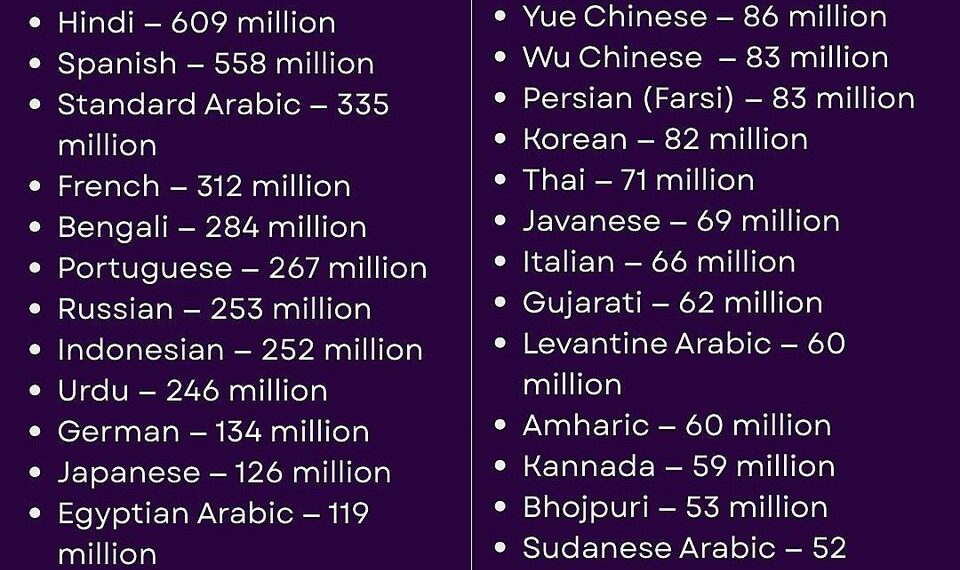Select Language:
1. English: The Global Lingua Franca
In 2025, English remains the most spoken language worldwide, with an estimated 1.5 billion speakers. It is the dominant language in international business, science, technology, and entertainment. Thanks to the influence of Western media and the internet, proficiency in English continues to be a vital skill for professionals and students globally. Countries like India, Nigeria, and the Philippines have seen significant growth in English speakers, making it a truly global language.
2. Mandarin Chinese: Asia’s Powerhouse
Mandarin Chinese has surged to the top of the list, with roughly 1.1 billion speakers. As China’s economy keeps expanding, so does the importance of learning Mandarin for global trade and diplomacy. Its tonal complexity and writing system pose challenges, but the language’s strategic value makes it an essential language for business and cultural exchange.
3. Hindi: India’s Expanding Voice
Hindi, spoken by over 600 million people, continues to grow due to India’s booming population and economic development. As India becomes a major player on the world stage, more individuals are learning Hindi to connect with its vibrant culture and emerging markets. The language’s rich literary and cinematic traditions contribute to its global appeal.
4. Spanish: The World’s Second Most Popular Romance Language
With approximately 560 million speakers worldwide, Spanish remains a powerful language within the Americas and across the globe. The popularity of Latin American countries in tourism, music, and cuisine fuels interest in learning Spanish. Its widespread use makes it a strong tool for international communication and cultural exchange.
5. French: The Language of Diplomacy and Culture
French, spoken by about 310 million people, retains its status as a language of diplomacy, arts, and philosophy. It is an official language in numerous international organizations, including the United Nations. France’s global cultural influence ensures continued interest, especially in African countries, Canada, and parts of Europe.
6. Arabic: The Language of Innovation in the Middle East
Arabic, with around 274 million speakers, is vital for understanding Middle Eastern politics, religion, and culture. It has numerous dialects, but Modern Standard Arabic remains the lingua franca for media, literature, and official communication across Arab countries. The region’s rich history and ongoing economic developments keep Arabic relevant in 2025.
7. Bengali: An Emerging Linguistic Force
Bengali, spoken by over 273 million people primarily in Bangladesh and India, is among the fastest-growing languages. Its literature and cultural heritage attract interest worldwide. As Bangladesh’s economy advances, the language’s importance in regional affairs increases.
8. Portuguese: Brazil’s Economic and Cultural Gateway
Hosting around 234 million speakers, primarily in Brazil, Portuguese continues to thrive thanks to the country’s diverse culture and economic potential. Portuguese is also spoken in several African nations, boosting its global footprint in commerce and diplomacy.
9. Russian: The Native Language of Eurasia
Russian, with approximately 154 million speakers, remains an influential language in Eurasia. Its role in science, technology, and geopolitics sustains its importance. Russia’s engagements in international organizations and regions like Central Asia bolster the language’s status.
10. Urdu: Pakistan’s Cultural and Political Voice
Urdu, spoken by an estimated 70 million people, is an essential language in Pakistan and parts of India. Its rich literary tradition and close ties with Hindi make it culturally significant. As Pakistan’s global influence grows, so does the relevance of Urdu.

The image illustrates the most spoken languages worldwide, reflecting linguistic diversity across continents in 2025.
11. Indonesian: Southeast Asia’s Rising Language
Indonesian (Bahasa Indonesia) is spoken by approximately 199 million people in Indonesia and neighboring countries. Its simplicity and cultural richness contribute to its popularity. As Southeast Asia’s economic landscape develops, Indonesian becomes increasingly important for regional cooperation.
12. German: Europe’s Economic Powerhouse
German, spoken by over 132 million people, remains the dominant language in the European Union’s largest economy. Its importance in engineering, philosophy, and science ensures sustained interest from scholars and professionals worldwide.
13. Japanese: Technology and Innovation Leader
With approximately 125 million speakers, Japanese continues to be influential in technology, robotics, and pop culture. Japan’s innovation sector drives interest in learning the language for business opportunities and cultural understanding.
14. Swahili: The Voice of East Africa
Swahili has about 16 million native speakers but is used as a lingua franca by over 75 million people across East Africa. Its role in regional trade, education, and diplomacy makes it an important language for development in Africa.
15. Turkish: Bridging Europe and Asia
Spoken by around 88 million people, Turkish serves as a cultural and political link between Europe and Asia. Its rich history, from the Ottoman Empire to modern Turkey, continues to attract language learners and scholars.
Note: The list continues with 25 additional languages, highlighting their regional importance, number of speakers, and cultural influence, reflecting the dynamic linguistic landscape of 2025.






